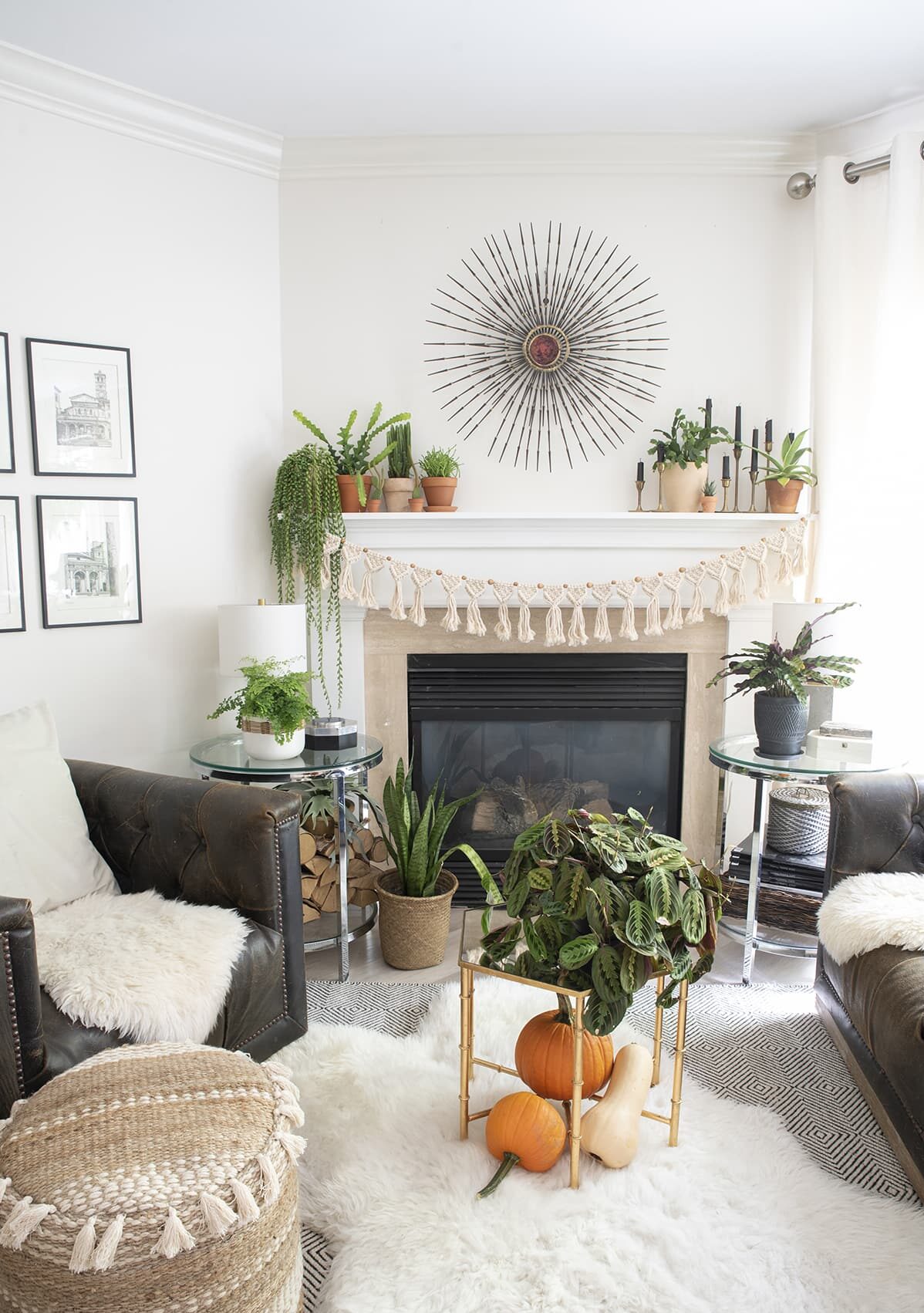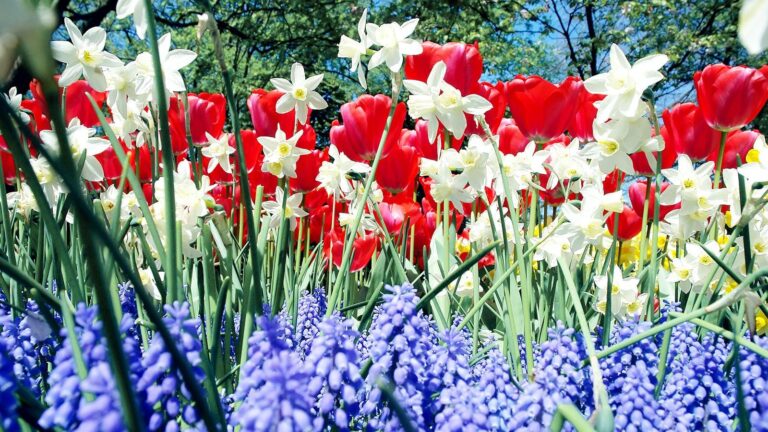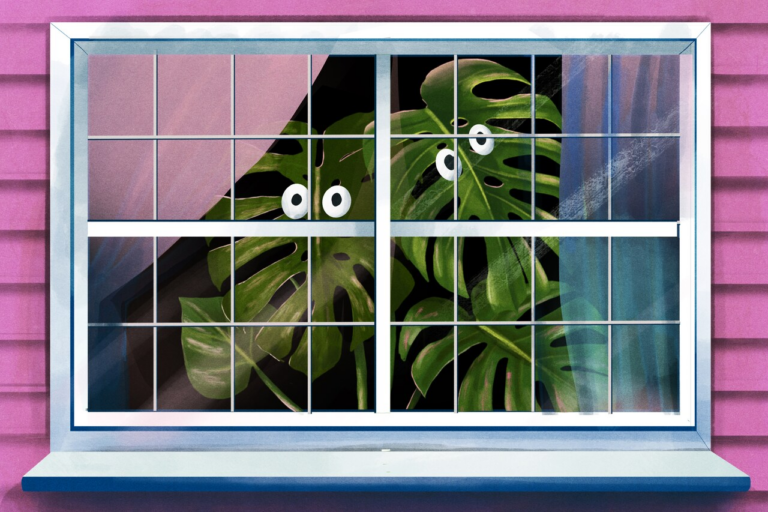Houseplantsitter’s Ultimate Fall Plant Care Guide

Houseplantsitter’s Ultimate Fall Plant Care Guide
Caring for Indoor Tropical Plants in Fall
As the seasons shift and outdoor conditions begin to change, many of us move our tropical houseplants from their summer routines into the quieter rhythms of fall and winter. For tropical plants especially, this transition requires some adjustments. While these plants are hardy in their native climates, their indoor life demands attention to changing light, temperature, humidity, and watering. Below, we’ll walk through each major care component and give you practical steps and useful tips.
Why Fall Is a Special Season for Indoor Tropical Plants
Fall brings several changes indoors: shorter daylight hours, cooler nights, often drier air (especially once heating kicks in), and less vigorous growth from many plants. These changes mean that your tropical houseplants — which may have thrived on warm summer days — will need a slightly different routine. If overlooked, you might see slowed growth, leaf drop, yellowing, or pest issues.
One key point: growth typically slows in the fall, so care should shift from vigorous feeding and growth-mode toward maintenance, comfort, and protection.
Also, indoor humidity often drops, and plants that evolved in humid, stable tropical climates may suffer unless we replicate some of those conditions.
With that in mind, let’s get into the specific areas of care.
Light: Adjusting to Shorter Days and Lower Intensity

As autumn arrives, the angle of the sun drops, daylight hours shorten, and indoor light intensity reduces. This affects how much radiant energy your plants receive for photosynthesis.
What to do:
| Move plants closer to appropriately lit windows. If your tropical plant was outdoors or in a bright, filtered-sun spot during summer, bring it closer to a bright interior window. | |
| Avoid cold drafts and hot radiators at windows. Some windows may become colder than ideal at night; avoid placing plants flush against the glass if it gets chilly. | |
| Supplement lighting if needed. For rooms that get especially low light, consider using a grow light to keep your tropical plants happy. Some sources recommend this especially when daylight drops. | |
| Know your plant’s light needs. Some tropical plants tolerate medium or low light indoors; others need bright indirect light. Make sure you match the plant’s preference. |
Without enough light, plants may grow leggy, lose leaf color, or drop leaves altogether. On the other hand, too bright and direct autumn sun through a window can scorch leaves. So find the balance.
Temperature: Keeping Conditions Comfortable
Tropical plants generally prefer consistent warmth and dislike sudden dips or exposure to cold drafts. In fall, indoor nights may get cooler than summer, and if a plant is still placed near a window with cooler glass or near an HVAC vent, it may suffer.
Best practice:
| Keep indoor temperatures generally in the 65°F to 75°F (18°C to 24°C) range for most tropical houseplants. | |
| Avoid placing plants too close to exterior windows that become very cold at night, or near door drafts or heating vents blowing hot dry air. | |
| If you bring plants inside from outdoors (see later section), give them a period of acclimation so they adjust to the indoor light and temperature change without shock. |
Temperature stress can lead to slowed growth, leaf drop, or increased susceptibility to pests and disease.
Humidity: The Often-Overlooked Factor

One of the biggest shifts in fall and winter is humidity. As indoor heating kicks in, air often becomes much drier — but many tropical houseplants expect humidity levels closer to those found in their native habitats.
Key steps:
| Group plants together. When plants are near each other, the collective transpiration increases local humidity. | |
| Use pebble trays or water trays. Put a tray of water with pebbles under or near pots; as the water evaporates it raises local humidity around the plant without flooding roots. | |
| Consider a humidifier. If your home is especially dry, a small humidifier near your plant collection can make a big difference. | |
| Avoid placement near hot dry air vents. Radiators, heating vents, and fireplaces generate dry, hot air that dehydrates leaves. Keep plants away from these sources. |
Insufficient humidity can cause browning leaf tips, crispy edges, and vulnerability to spider mites and other pests that prefer dry air.
Watering: Adjusting Your Schedule
Watering is one of the most common areas where plant parents make mistakes in fall. Because plants’ growth slows and light is reduced, they require less water, and overwatering becomes a higher risk.
Recommendations:
| Check the soil rather than sticking to a schedule. Use your finger to check the top inch (or two) of soil for dryness; only water when needed. | |
| Reduce watering frequency. Many tropicals will need less water in autumn than in summer because lower light and cooler temps reduce evaporation. | |
| Ensure good drainage. Soil should be well-draining, and water should run freely out of drainage holes. If water sits on the surface too long or soil stays soggy, root rot can set in. | |
| Avoid cold water and chill. Use room-temperature water, avoid watering near cold windows or drafty spots. | |
| Don’t assume no watering. While watering frequency decreases, you still must ensure plants are hydrated — especially if you’ve increased humidity and light somewhat. |
Overwatering in fall is a rampant issue; since roots grow more slowly and water usage is lower, soggy soil becomes a prime breeding ground for root rot and fungal issues.
Fertilizing & Growth Management
With reduced growth in fall, many tropicals don’t need heavy fertilizing. Too much fertiliser can cause a build-up of salts in the soil, which may stress the plant.
Guidelines:
| Cut back on fertilizer. Many guides recommend reducing or halting fertilising during fall and winter when growth slows. | |
| If you do feed, do so lightly and sparingly. Use a diluted, balanced liquid fertilizer maybe once every 4-6 weeks, depending on light and growth. | |
| Avoid promoting new strong growth just before winter. New growth is more susceptible to cold or low light damage, so maintaining a stable, moderate state is preferable. | |
| Pause major repotting or heavy growth work. Because roots are less active, repotting right as fall sets in can be stressful (see next section). |
Over-fertilizing in low-growth conditions wastes nutrients, can harm the plant, and leads to weaker plants in the long run.
Repotting and Potting Soil Maintenance
Repotting is a sensitive topic in fall. While it might be tempting to refresh your plant’s pot after a summer of growth, many experts suggest caution.
What to know:
| Fall is not the ideal time for repotting. Because many plants are entering slower growth mode, their roots are not as active and may take longer to establish, making them more vulnerable to stress and root rot. | |
| If you must repot, do so carefully. For example, if your plant is severely root-bound or soil is completely degraded, it may still be appropriate — just take extra care. | |
| Freshen soil minimally. If you’re not repotting, you can lightly top-dress with fresh potting mix or refresh the surface a few inches to help aeration and nutrient levels. | |
| Check for pests before moving plants indoors. If your plant has been outside or in a high-risk location, inspect carefully and treat pests before bringing it indoors. |
A heavy repot at the wrong time can lead to root shock, major leaf drop, slow recovery, and increased susceptibility to disease.
Transitioning Outdoor Plants Indoors

If you spent the summer placing tropical plants outdoors (patio, porch, etc.), transitioning them indoors in fall is a major care step.
Key actions:
| Bring them inside before nighttime temperatures drop too low. A rule of thumb: once nights approach 50–55°F (10-13 °C), it’s time to bring many tropical plants back inside. | |
| Acclimate slowly. Rather than a sudden move from bright outdoor sun to indoor light, place the plant first in a shaded outdoor spot, or reduce its light exposure over a week or two. This helps reduce shock. | |
| Check and treat for pests. Outdoor plants are at higher risk of pests; before bringing indoors, wash off soil, inspect thoroughly, and treat insect issues so you don’t bring pests into your indoor collection. | |
| Clean the foliage and pot. Remove dust and debris, wash off the leaves, and wipe them gently to maximize light absorption after moving inside. | |
| Position properly. Once inside, provide a stable environment away from drafty doors or cold windows, and maintain humidity and lighting as covered above. |
A smooth transition allows your plant to adapt and avoids stress-related leaf drop or shock.
Pruning, Cleaning & Pest Monitoring
Fall is an excellent time to perform maintenance tasks: cleaning leaves, removing dead or yellowing foliage, checking for pests, and ensuring plants remain healthy heading into winter.
Tasks to include:
| Remove dead, yellowing or damaged leaves. This keeps the plant looking good and prevents fungal issues. | |
| Clean leaves to maximize light uptake. Dust blocks light and reduces photosynthesis; use a gentle damp cloth. | |
| Monitor for pests. Spider mites, scale, mealybugs, and aphids often become more of a problem indoors in fall or after transition. Check undersides of leaves, leaf joints, soil surface. | |
| Prune for shape and remove leggy growth. While heavy shaping is best done in spring, you can clean up form in fall so the plant enters winter in good condition. | |
| Avoid heavy pruning or major cutting back unless necessary. Because growth is slower, drastic pruning can stress the plant. |
Maintenance keeps plants healthy and ensures they are positioned to survive and thrive through the cooler/higher-risk period.
Matching Plant Types and Expectations
Not all indoor tropical plants have exactly the same needs. “Tropical plant” is a broad category. Some prefer moderate light, some low light; some like high humidity, others tolerate drier air. Fall care doesn’t have a one-size-fits-all, but the guidelines above give the framework.
Tips:
| Identify each plant’s origin and preferred conditions (light, humidity, soil) and adjust accordingly. | |
| For plants that are more tolerant (for example, some ferns, palms, pothos), you might have a bit more slack in conditions. For more sensitive or finicky tropicals (e.g., some begonias, alocasias, rare aroids), you’ll need more attentive monitoring. | |
| Accept slower growth. Many tropicals simply won’t grow fast in fall/winter — and that’s normal. Don’t interpret slowed growth as failure. | |
| If you notice a particular plant dropping many leaves, wilting, or looking weak, check whether the light, humidity, temperature or watering has shifted. These are the most common culprits. |
Common Problems in Fall and How to Address Them
Even with the best intentions, problems can arise. Here are some of the most common fall issues with indoor tropicals and how to remedy them.
Issue: Leaf drop or yellowing leaves
| Often due to low light, cold drafts, or too much watering. | |
| Move the plant to a better light spot, check for cold drafts/windows, reduce water. | |
| If moving indoors from outside, ensure a slow transition. |
Issue: Brown leaf tips, crispy edges
| Likely due to low humidity, dry air, or proximity to heating vents. | |
| Increase humidity with trays, grouping, or humidifier; move away from vent. |
Issue: Leggy growth or sparse foliage
| Possibly low light or plant in recovery mode due to transition. | |
| Provide better light, avoid pushing it with heavy fertilizer; accept slow growth. |
Issue: Root rot signs (mushy roots, waterlogging, foul smell)
| Typically caused by overwatering or poor drainage during low growth season. | |
| Remove the plant from soggy soil, trim off rotten roots, repot into fresh mix (if necessary) with good drainage, and reduce watering frequency. |
Issue: Pests (spider mites, scale, mealybugs)
| Cold dry indoor air and stressed plants make pests more likely. | |
| Isolate affected plants, manually remove pests, use insecticidal soap or neem, increase humidity and plant condition to boost plant’s resilience. |
Issue: Shock from rapid change of environment
| Happens when tropicals are brought indoors too late, or from strong outdoor light to weak indoor light, or from warm outside to cold inside. | |
| Solution: Give a gradual transition, monitor carefully, and maintain stable conditions. |
Practical Fall Care Checklist
Here’s a handy checklist you can use during fall to keep your indoor tropical plants on track:
| Assess lighting: Are plants receiving sufficient natural or supplemental light? | |
| Check temperature: Are plants away from cold windows, doors, and hot dry vents? | |
| Monitor humidity: Use a hygrometer if possible; take steps if humidity is below ~40-50 %. | |
| Water thoughtfully: Check soil moisture before watering; resist fixed schedule watering. | |
| Fertilize lightly or pause fertilizing. | |
| Inspect for pests; treat proactively when symptoms appear. | |
| Clean leaves of dust and debris to improve light capture. | |
| Remove dead or damaged leaves; tidy up plant form. | |
| For plants transitioning indoors: acclimate gradually, inspect for pests before bringing in, and adjust soil if needed. | |
| Avoid heavy repotting unless absolutely necessary; wait for spring when possible. | |
| Document any changes: note leaf drop, growth rate, condition and adjust accordingly. |
Why Your Effort Matters

You might wonder: “If growth is slowing anyway, why bother so much?” Here’s why: Fall is a season of preparation. The better you manage conditions now, the healthier your plants will be when they resume growth in spring and summer. A healthy plant entering winter will avoid many problems: fewer pests, stronger foliage, better resilience, and ultimately better appearance. Neglect now often means extra work later.
Moreover, indoor tropical plants contribute more than aesthetics — they help purify air, add a sense of calm, and contribute to well-being in your home. Keeping them thriving through fall and winter means you continue to reap these benefits.
Final Thoughts
Caring for indoor tropical plants in fall is about adjustment, observation, and gentle maintenance rather than pushing for big growth bursts. By tuning into the changes in light, humidity, temperature, and watering needs, you give your plants the support they need to glide comfortably into the slower season.
Think of fall care as the maintenance cycle: fewer demands but greater sensitivity to change. With thoughtful placement, a little humidity love, careful watering, and attention to pests and cleaning, your tropical houseplants will not only survive but remain lush, healthy, and ready for the next growth surge.
So as the leaves begin to turn and the daylight shrinks, shift your mindset from “grow more” to “maintain well”. Your indoor jungle will thank you, and you’ll step into spring with thriving green companions instead of remedial tasks.
Need some help help caring for your plants during the fall season?
Contact HousePlantSitter to learn how we can help you with your plants



